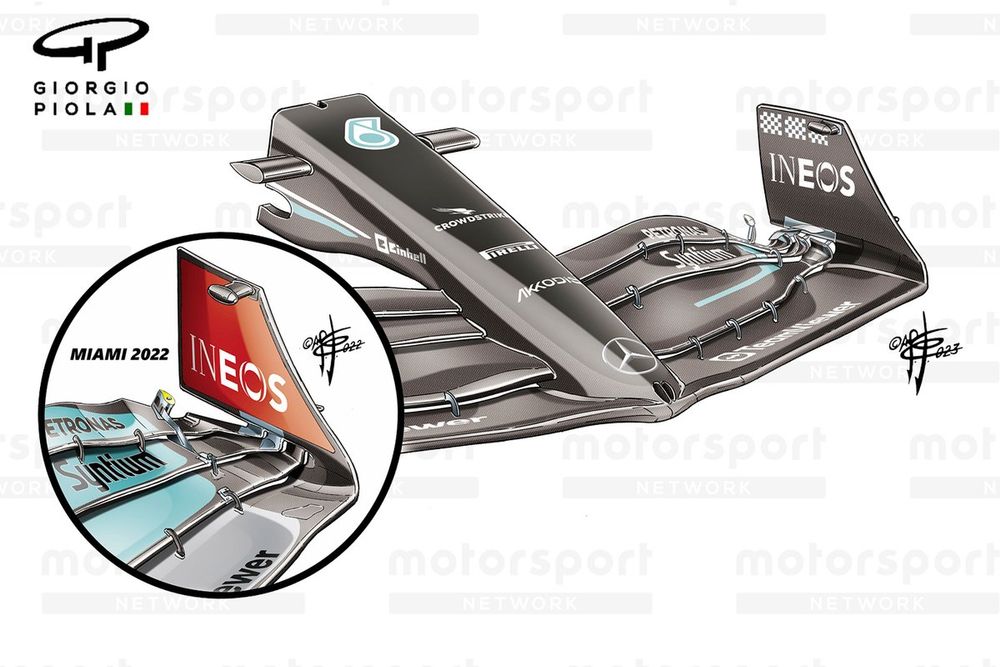The design centres around how the flaps connect to the endplate and how that can be used to amplify the outwash effect that’s being generated.
This is something that the regulations for this newer generation of cars was supposed to limit, in order to improve wheel-to-wheel racing by means of reducing the overall wake output of the cars.
However, knowing the value of generating outwash from the front wing and the role it can play in improving performance downstream, teams have inevitably looked for a means to recover any losses.
Mercedes was the first to propose a similar solution in 2022, albeit in a slightly different guise. It still had the intention of opening the lowermost rear corner of the endplate to help generate outwash though.
Owing to subsequent changes in the regulations to prevent this trait for 2023, Mercedes pursued the semi-detached design solution instead, which has since spawned a number of similar arrangements up and down the grid.
Rival teams likely saw the potential and sought ways to optimise it – either by adapting their current layout or by making further alterations to the wing’s overall design in order to reap the rewards on offer, not only at source but also downstream.
In order to achieve this, the lowermost rear portion of the endplate is cut away completely and the flap’s tips are displaced from the endplate’s Y axis.
This aerodynamic confluence is further enhanced by the twist that’s invoked on the vertical portion of the flap, as each tip creates its own vortex structure that influences the larger aerodynamic structure being generated.

These flow structures are further optimised in some cases by the introduction of horizontal winglets that are mounted on the inner face of the endplate, above the flaps. Williams has added its above the final element on its front wing.
Meanwhile, the shape of the endplate (red arrow), the position and type of diveplane, plus the shape and position of the spars that connect the flaps and endplate and the shape of the flap transition also play an important role in the betterment of the main flow structures emanating from this region. These are often adjusted in concert with a change to semi-detached flaps.
In Williams’ instance, this has resulted in the team changing the design of its diveplane entirely, with the novel wedge-shaped solution (inset, main image) making way for a more conventional S-shaped variant.
For Alpine, it has forsaken the…
Click Here to Read the Full Original Article at Autosport.com – Formula 1 – Stories…

